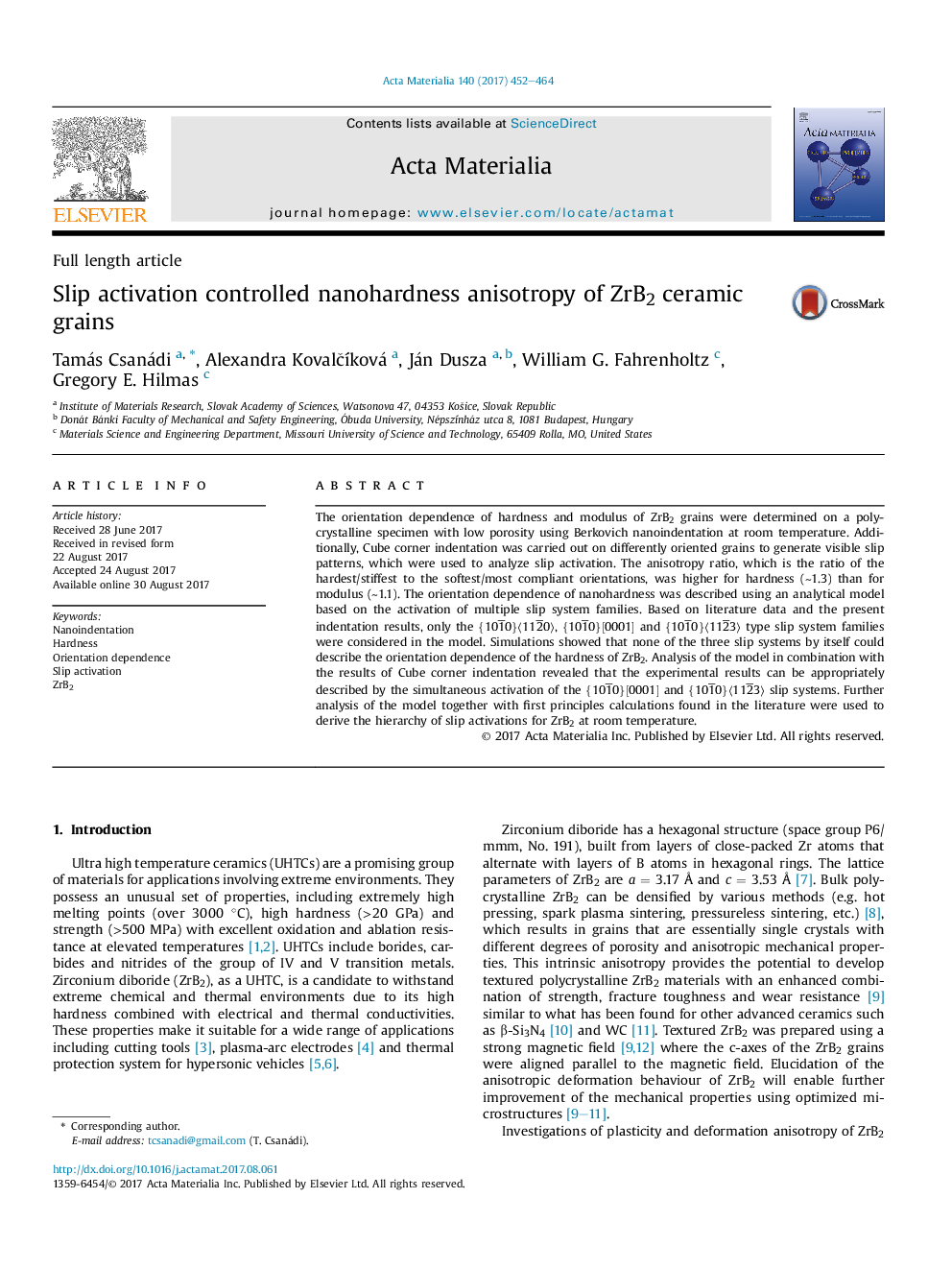| Article ID | Journal | Published Year | Pages | File Type |
|---|---|---|---|---|
| 5435793 | Acta Materialia | 2017 | 13 Pages |
The orientation dependence of hardness and modulus of ZrB2 grains were determined on a polycrystalline specimen with low porosity using Berkovich nanoindentation at room temperature. Additionally, Cube corner indentation was carried out on differently oriented grains to generate visible slip patterns, which were used to analyze slip activation. The anisotropy ratio, which is the ratio of the hardest/stiffest to the softest/most compliant orientations, was higher for hardness (â¼1.3) than for modulus (â¼1.1). The orientation dependence of nanohardness was described using an analytical model based on the activation of multiple slip system families. Based on literature data and the present indentation results, only the {101¯0}ã112¯0ã, {101¯0}[0001] and {101¯0}ã112¯3ã type slip system families were considered in the model. Simulations showed that none of the three slip systems by itself could describe the orientation dependence of the hardness of ZrB2. Analysis of the model in combination with the results of Cube corner indentation revealed that the experimental results can be appropriately described by the simultaneous activation of the {101¯0}[0001] and {101¯0}ã112¯3ã slip systems. Further analysis of the model together with first principles calculations found in the literature were used to derive the hierarchy of slip activations for ZrB2 at room temperature.
Graphical abstractDownload high-res image (265KB)Download full-size image
